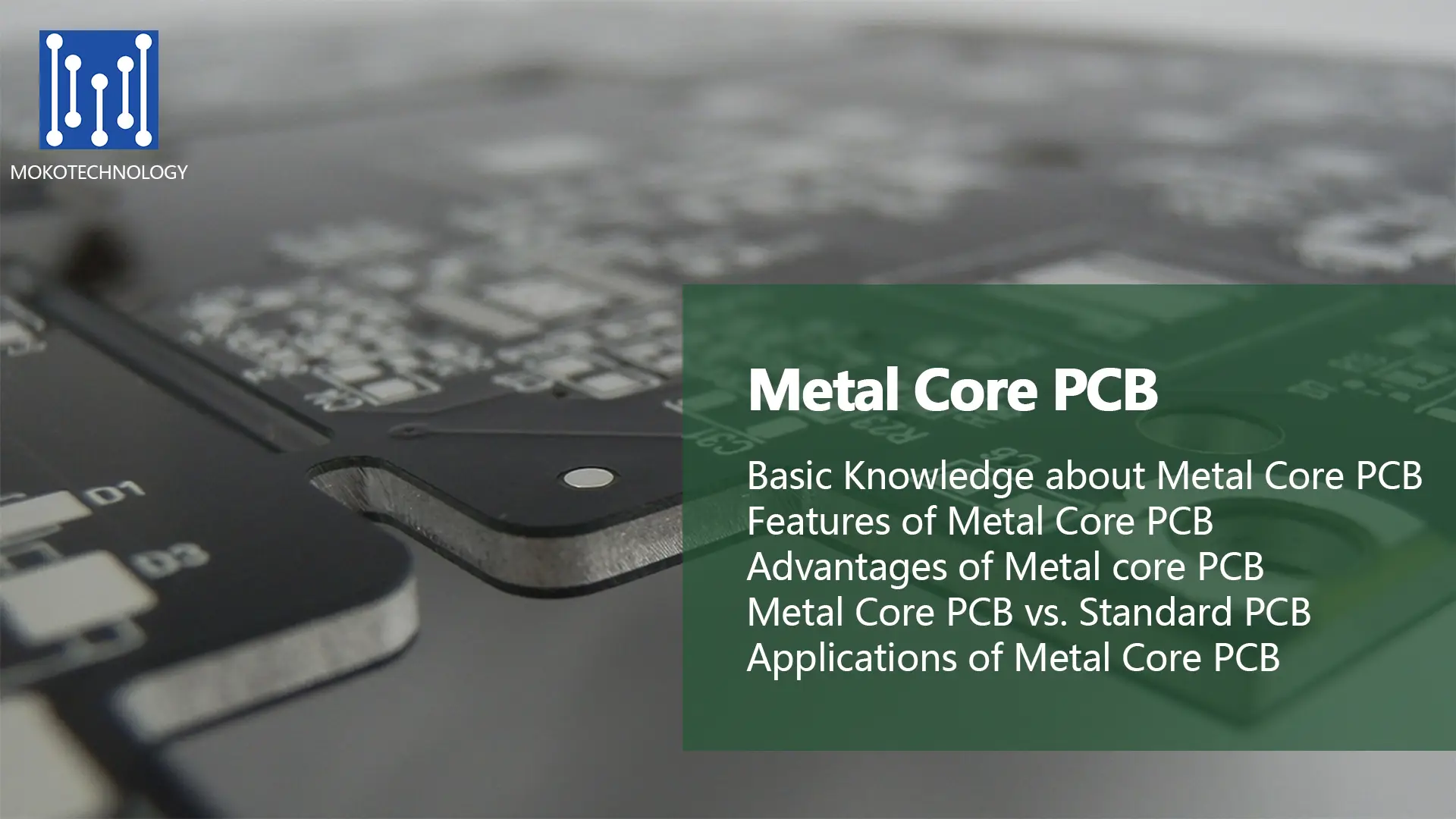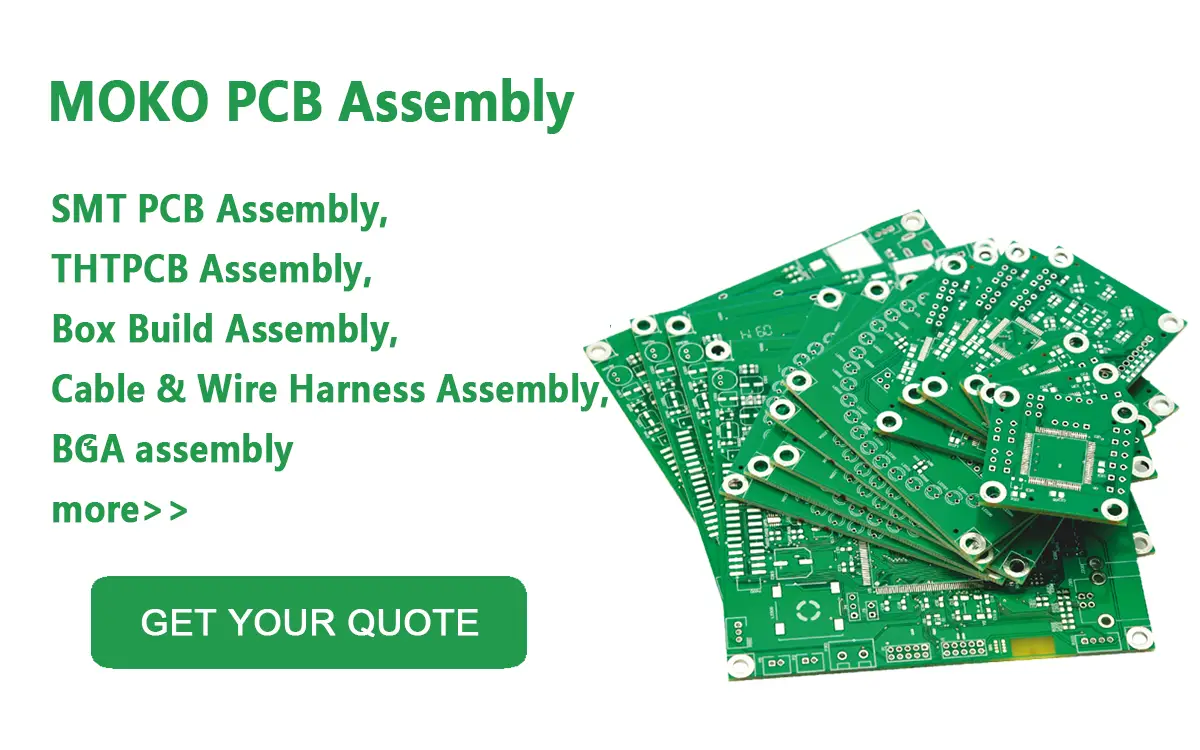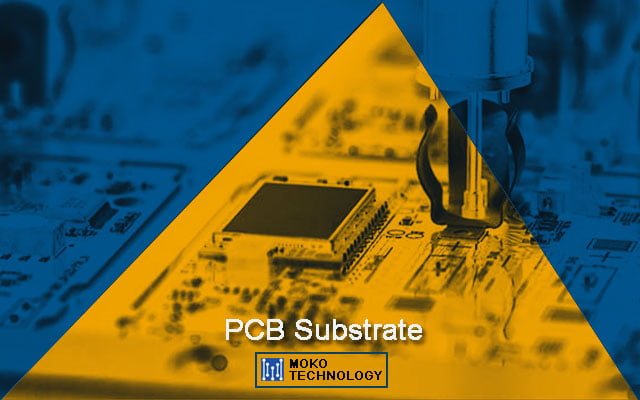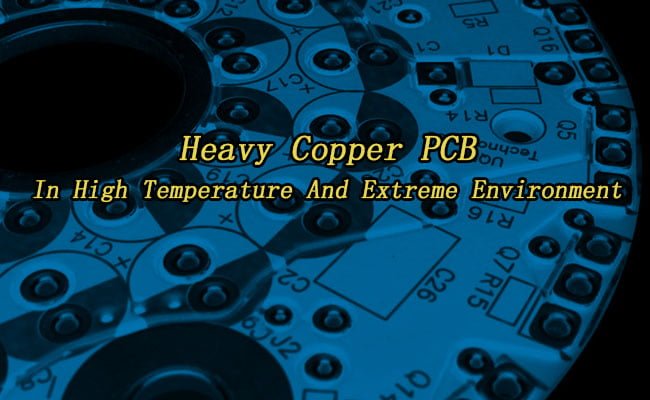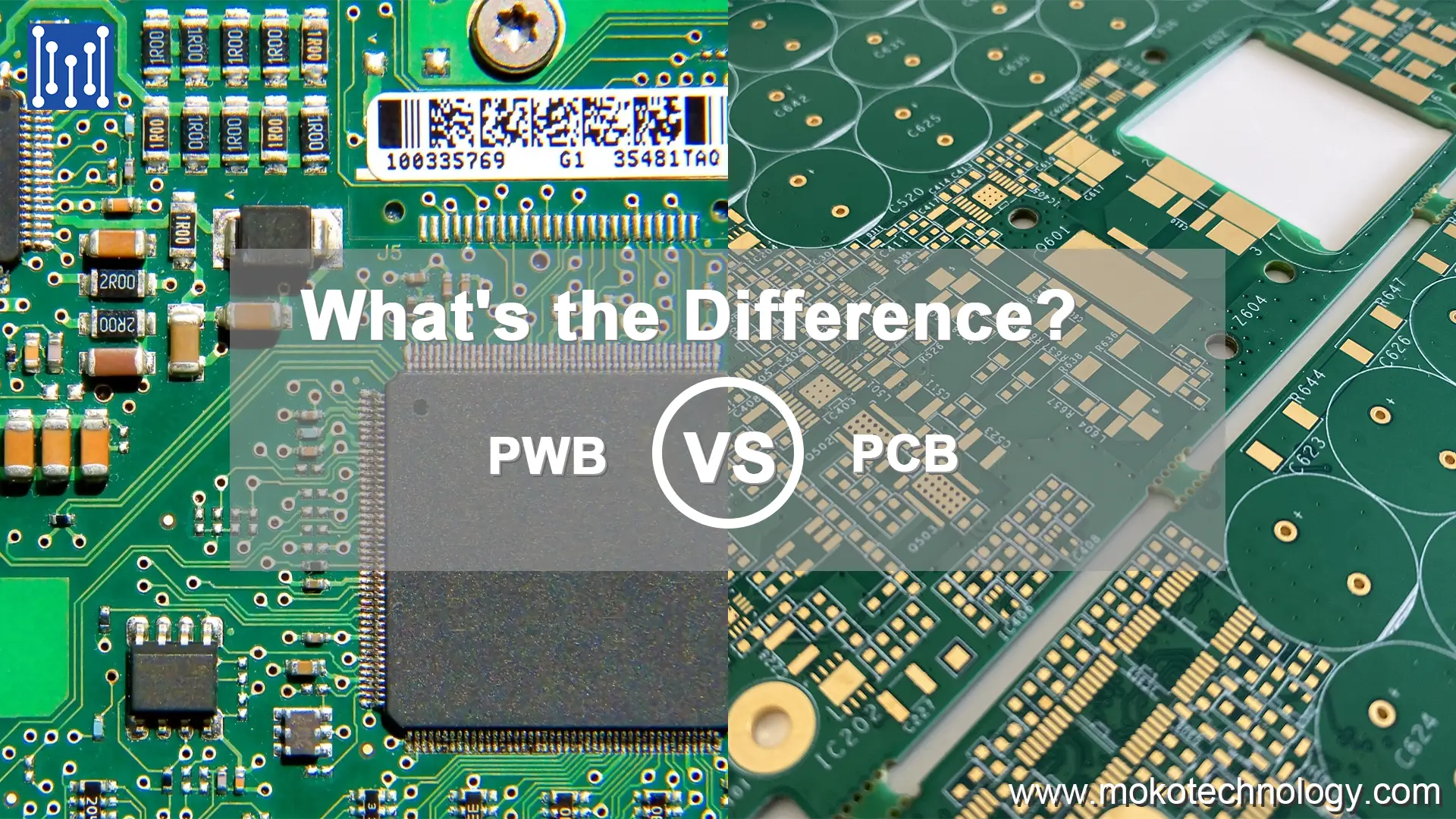Metal Core PCB (MCPCB) is a type of printed circuit board that utilizes a metal base material such as copper, aluminum, or steel alloy instead of the traditional FR4 material. As the name implies, MCPCBs contain a metal core layer that allows them to dissipate heat more effectively than standard circuit boards. With their superior heat dissipation capabilities, MCPCBs have become increasingly popular in recent years. In this article, we will introduce more details about the metal core PCB including its features, advantages, applications, and so on, now let’s read on.
Basic Knowledge about Metal Core PCB
First of all, let us know some basic information about metal core PCB:
Basic Structures of an MCPCB
Solder Mask
Circuit Layer
Copper Layer
Dielectric Layer
Metal Core Layer
Heat Sink
Material Used for MCPCB
In most cases, people use aluminum and copper as the materials of metal core, while some may use the other conductive metals and a mixture of special alloys as well. Different metals have different properties, for instance, aluminum is cheaper than copper, but copper has better heat dissipation performance. Stainless steel has a low thermal conductivity but it is more rigid. Therefore, the application and usage environment of the PCB should be considered when selecting materials for metal core.
Different Types of MCPCB
According to the location of metal core and the number of trace layers, we can divide the metal core PCB into four types, they are:
Single Layer MCPCB: It refers to the MCPCB with just a single trace layer on one side.
Double Layers MCPCB: This kind of MCPCB has two trace layers on the same side.
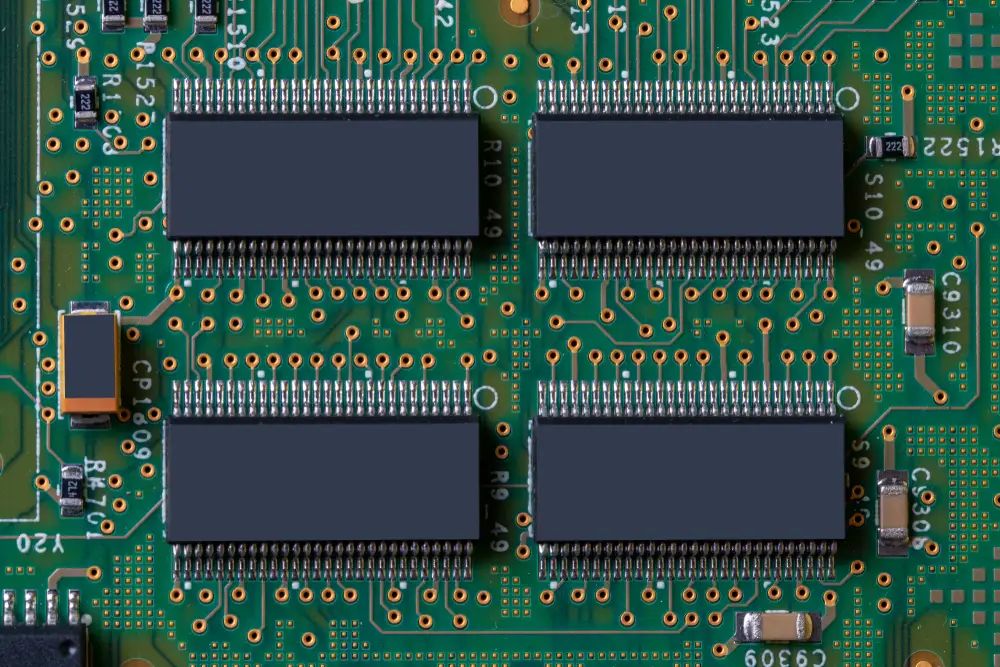
Double-Sided Layer MCPCB: For this type of MCPCB, there are two trace layers on each side.
Multi-layers MCPCB: It refers to the type of metal core PCB with more than 2 trace layers per board.
Features of Metal Core PCB
In this section, we will take a look at the features of MCPCB:
- Metal Core PCB Thickness
If we use aluminum as the metal core then its thickness is 0.8-2.0 mm. However, if we use copper as the metal core then its thickness is 1-5 mm. However, metal cores can deviate from these dimensions. So, thicker and thinner plates are possible.
- Metal Core PCB Thermal Conductivity
The thermal conductivity of the material shows how it allows heat to flow through it. So, it relates to the capability of a material to dissipate heat. Thermal conductivity of metal core PCB is typically between 1.5W/(m·K) and 2.0W/(m·K)
- Metal Core PCB Peeling Strength
It is the force required to remove material from an attached surface. The peeling strength of MCPCB is typically greater than 9lb/in.
In the table below, we also list some more features of metal core PCB so that you can get a clear understanding of them.
| Aluminum thickness | 0.8-2.0mm |
| Thermal conductivity | 1.5W – 2.0W/(m·K) |
| Peeling strength | >9lb/in |
| Solder resistance | SF: 288℃, >180 sec |
| Breakdown voltage | >3000v |
| Dielectric loss angle | 0.03 |
| Flammability | UL 94V-0 |
| Aluminum thickness | 0.8-2.0mm |
Advantages of Metal core PCB
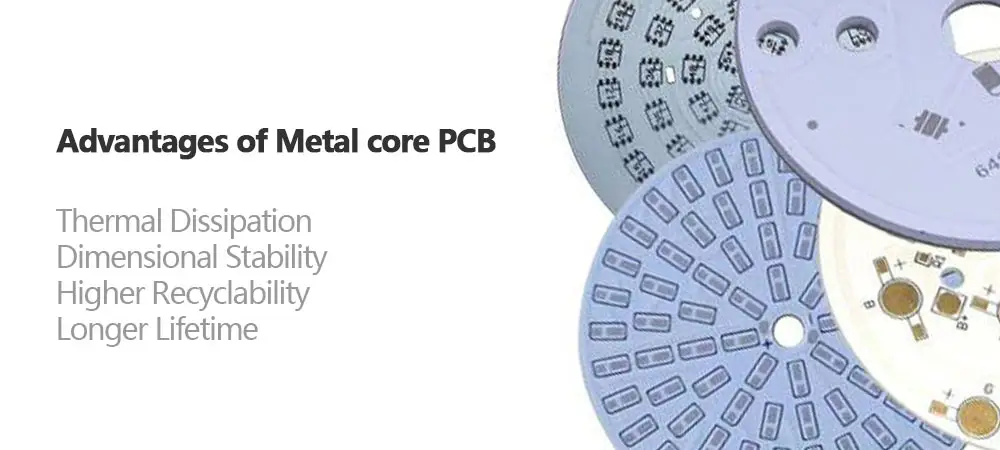
In addition to excellent heat dissipation, metal PCBs have many advantages such as higher power density and better capacitive coupling. Here we talk about its four advantages in detail:
- Thermal Dissipation
Metal core PCBs have higher thermal conductivity, and they can transfer heat several times faster than those PCBs that are made from FR-4. In addition, due to the high thermal energy transfer efficiency, the metal PCB can use a thin copper layer, which is beneficial to reduce the overall thickness of the PCB and its manufacturing cost.
- Dimensional Stability
For PCBs made of traditional materials such as FR4, their dimensions will be affected by changes in the use environment, such as the rise of temperatures, while the metal core PCB is relatively stable. Experiments show that the dimensional change of PCBs with metal layers is controlled in the range of 2.5% to 3.0% when the temperature is changed from 30°C to 150°C.
- Higher Recyclability
Metal PCBs are featured with higher recyclability, many metals are environmentally friendly. They are non-toxic and can be recycled without difficulty. Just taking aluminum as an example, on the one hand, it is very easy to recycle, on the other hand, it is less expensive than heat sinks as it can be mined and refined easily, so we can use aluminum PCB as a cost-effective alternative.
- Longer Lifetime
Metal core PCBs have a longer lifetime as they are stronger and more durable than PCBs made from ceramic and fiberglass. As we all know that metals are robust and can withstand physical shocks, using metals as materials for manufacturing PCBs can reduce the risk of breakage during the fabrication and assembly stages, which also makes the final products stronger.
Metal Core PCB vs. Standard PCB
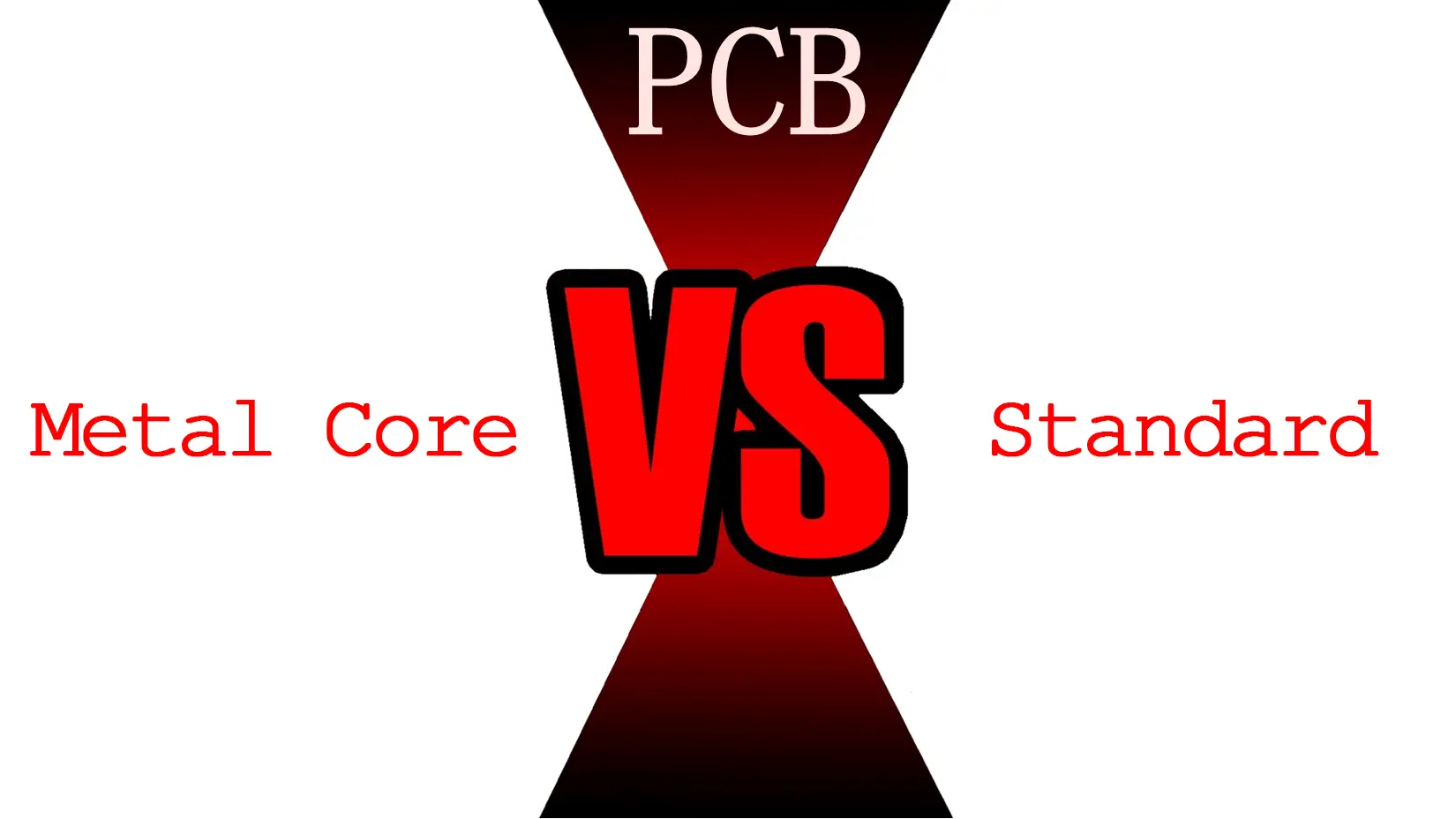
In this section, we will draw a comparison between the MCPCB and Standard PCB.
- Conductivity
Standard PCB has a low thermal conductivity that is around 0.3W. Whereas MCPCB has a higher thermal conductivity which ranges from 1-2W.
- Plated Through Holes
In standard PCBs, we often have to use plated through holes. However, we don’t necessarily need them in MCPCB.
- Thermal Relief or Heat Dissipation
We have to use vias for heat dissipation in standard PCB. This means that there are longer drill cycles and additional processes. However, MCPCB doesn’t require via drilling, plating or deposition processes. This is because the metal core allows for efficient thermal relief and heat dissipation.
- Solder Mask
The solder mask is usually of dark colors in standard PCB. So, the colors are usually black, green, blue, and red. Hence, we apply the solder mask on the top and bottom. On the other hand, in MCPCB, we apply the solder mask to the top only and it is generally white in color.
- Thickness
Standard PCBs have a wide range of thicknesses available due to their use of layer mounts and various material combinations. However, the thickness variation in MCPCB is usually limited because of the available dielectric sheet thicknesses and backing plate thicknesses.
- Machining Process
Standard PCBs use conventional machining processes such as routing, countersink, drilling, and v-scoring. However, we need a diamond-coated saw blade for the v-scoring of MCPCB. This is because cutting of metals requires sharp tools.
| Standard PCB | Metal Core PCB | |
| Conductivity | 0.3W | 1-2W |
| Plated Through Holes | Required | Not Required |
| Heat Dissipation | Vias | Metal Core |
| Solder Mask | Dark Color | White Color |
| Thickness | Wide Range | Limited |
| Machining Process | Ordinary tools | Sharp tools |
Applications of Metal Core PCB
Metal core PCBs are popular because of their excellent performance and are widely used in various industries:
LED Lights: MCPCBs are often suited for such applications which generate a large amount of heat that we can’t eliminate using conventional fans. We often find MCPCBs in LED technologies because they allow us to reduce the number of LEDs required for producing a certain amount of illumination and reduce the amount of generated heat.
Automobile: Automotive power conditioners, ignitions, swap converters, variable optics, etc. all use metal PCBs.
Power Supply Devices: Power converters, switching regulators, high-density power conversion, and other equipment require the use of metal core PCBs.
Military and Aerospace: The PCBs in military and aerospace applications must withstand extreme temperatures, thermal cycling, and moisture. Additionally, they have to endure frequent mechanical shocks. Hence, we use a metal core PCB because they meet these service requirements and allow for greater structural integrity. The high thermal conductivity of MCPCB makes sure the uniform temperature distribution on these boards. So, they are better able to withstand thermal cycling and hence prevent the formation of hot spots near active components.
MOKO Technology is a renowned name in the PCB industry and we are known for our excellent services. If you are looking for customized metal core PCB manufacturing for your needs then you are in the right place. MOKO has extensive experience and is well acquainted with the various materials used to manufacture metal PCBs, and our commitment to strict quality control ensures the high quality of each metal core PCB. Feel free to contact us for further details about our services.
